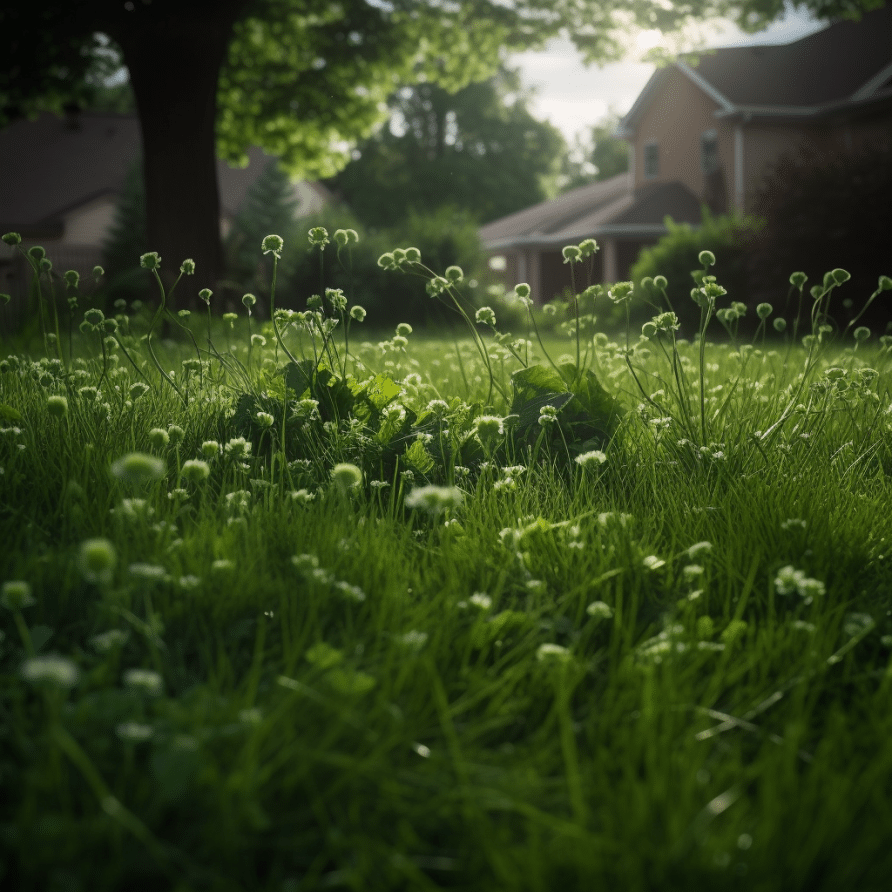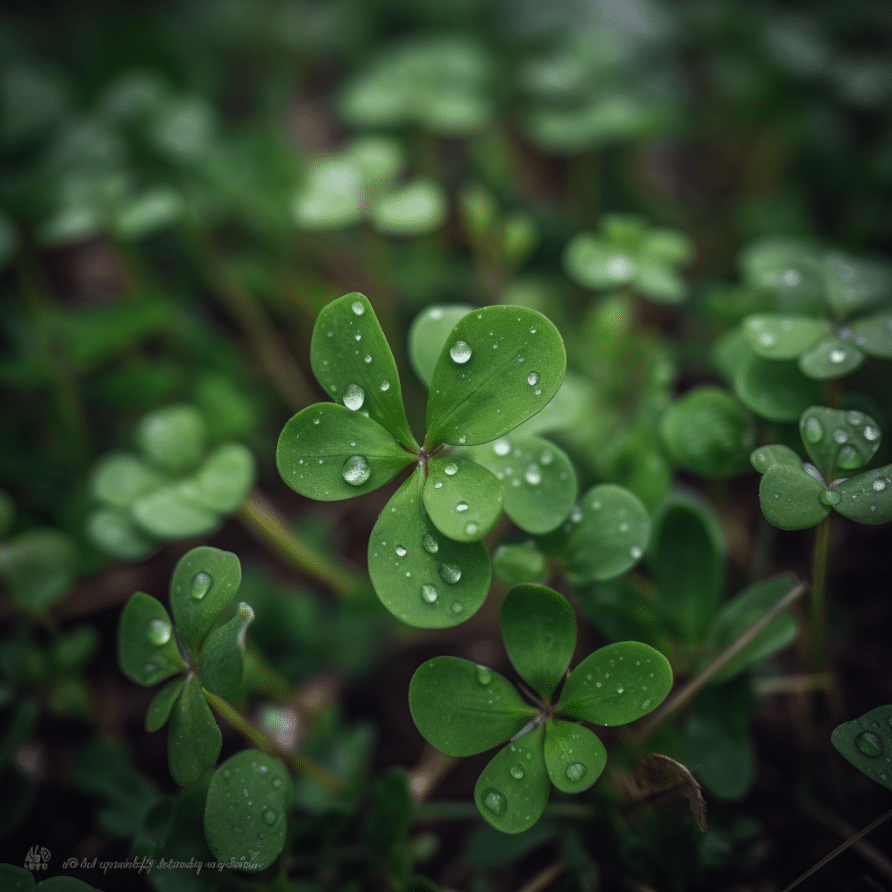
Understanding Clover and Its Impact on Your Lawn
First, let’s get to know clover a bit better. It’s not just the plant you associate with luck or St. Patrick’s Day. Clover, also known as Trifolium, is a hardy perennial weed that can easily invade your lawn if given half a chance.
Now you might be thinking: why should I worry about clover? After all, it’s green and it covers the ground like grass does. Well, while some homeowners don’t mind clovers because they’re low maintenance and drought-resistant, others see them as an unwelcome guest.
Why so? The answer lies in aesthetics and biodiversity. Clover has a different texture and color than most types of lawn grasses; this contrast can be quite noticeable especially when the clover blooms with white flowers – beautiful but not when you want uniformity in your lawn! Moreover, once established in your yard, clovers are incredibly persistent thanks to their deep roots system.
As for biodiversity – yes more variety of plants could seem good for nature – but having too many species fighting for space may result in weaker lawns overall.
Another point to consider is that clovers attract bees due to their flowers which might pose stinging hazards particularly if there are kids around playing often on the turf!
Here’s a quick rundown:
- Different aesthetic look
- Persistence due its root system
- Poses stinging hazards
However before we get ahead of ourselves let me clarify one thing – having some amount of clovers doesn’t necessarily mean bad news. In fact they have certain benefits:
- They add nitrogen back into soil acting as natural fertilizers.
- Their presence indicates compacted soil which gives us insight into our garden health.
So while it’s important we keep them under control remember every cloud has its silver lining!

Natural Methods to Eliminate Clover From Your Lawn
If you’re like me, you’ve probably noticed that clover can quickly take over your lawn if left unchecked. But don’t worry, I’ve got some natural solutions for you.
The first method is mowing. Sounds simple, right? Well it is! By setting your mower to a higher setting (around 3 inches), the grass will be able to out-compete the clover for sunlight. This won’t give an immediate result but with time and patience, it’ll significantly reduce the presence of clover in your lawn.
Next up is corn gluten meal (CGM). CGM acts as a pre-emergent herbicide that prevents weed seeds from sprouting – including those pesky clovers. Just make sure not to use this method if you’ve recently seeded your lawn as it doesn’t discriminate between wanted and unwanted seeds!
Now let’s talk about vinegar – yes, good old-fashioned white vinegar! The acetic acid content in vinegar makes it an effective natural herbicide against small patches of established clovers without harming the surrounding grass too much.
Finally, consider introducing beneficial nematodes into your soil ecosystem. These microscopic worms feed on various garden pests including certain types of weeds like our unwanted friend: the clover!
Here’s a brief summary:
- Mow high
- Use corn gluten meal
- Apply white vinegar
- Introduce beneficial nematodes
Remember though: healthy lawns are often less susceptible to weed invasions so ensuring proper care such as regular watering and fertilizing can go a long way in keeping these intruders at bay.
It’s worth noting each approach has its pros and cons so do some research before deciding which one fits best with your gardening philosophy and budget.
And there we have it – no need for harsh chemicals or professional services when Mother Nature provides us with all we need! With persistence and patience, I’m confident any homeowner can win their battle against this green invader naturally!
Troy Channer is a seasoned professional with over a decade of experience in the construction industry, specializing in residential projects and road infrastructure networks. His expertise spans a broad range of skills, including proficiency in Microsoft Excel, Word, and PowerPoint, which he adeptly uses to streamline operations and enhance productivity.
Troy’s commitment to excellent customer service is a cornerstone of his professional philosophy, always prioritizing client satisfaction and fostering strong relationships. His leadership skills are well-recognized, and he has a proven track record of managing teams to deliver high-quality results.
In addition to his construction experience, Troy is also the proud owner of a successful landscape company based in Oakville. This venture allows him to apply his extensive knowledge of civil engineering and project management to create beautiful and sustainable outdoor spaces for his clients.
Troy holds an Advanced Diploma in Civil Engineering Technology from Humber College, further solidifying his credentials as a highly skilled operations professional in the industry. His combined experience and education make him a versatile professional capable of tackling a wide range of projects.








